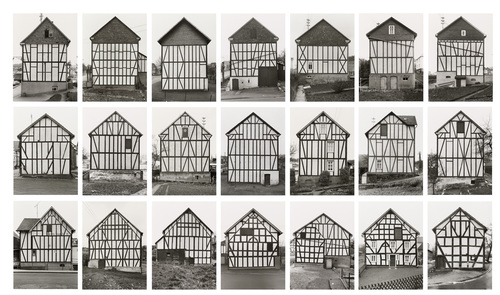‘New Topographics’ was a term created by William Jenkins in 1975 to describe a group of American photographers (such as Robert Adams and Lewis Baltz) whose pictures had a similar banal (ordinary) aesthetic. They were formal and mostly black and white prints of the urban landscape. Parking lots, suburban housing and warehouses were a main focus for many of these photographs.
The group consisted of 8 young, american photographers that Jenkins chose- Robert Adams, Lewis Baltz, Joe Deal, Frank Gohlke, Nicholas Nixon, John Schott, Stephen Shore, and Henry Wessel, Jr. He also included the German couple Bernd and Hilla Becher.
The New Topographics responded to man’s impact on the land by casting a somewhat ironic or critical view on what American society had become. Each of them had presented urban and/or suburban landscapes that were under expansion, gentrification or other changes.
They all discovered a sense of beauty within the ordinary ugliness of functional land use- a banal aesthetic.

Bernd and Hilla Becher stood out from the New Topographics group, creating series of images called Typologies. A photographic typology is a study of “types”. It’s a photographic group that collects certain types of photographs rather than creating stand-alone images. It’s a powerful method of photography that can be used to reshape the way viewers perceive the world around them.
The Becher’s mainly photographed derelict and abandoned buildings, mostly in Bernd’s childhood town which was to be a victim of devastation. They took images of this area to preserve memories and the urban beauty of the town.



